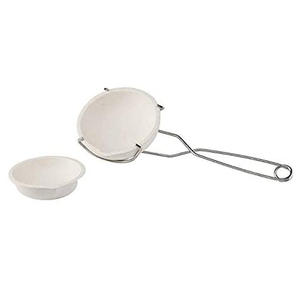Intro to Ceramic Products: Bridging Custom with Modern Product Scientific Research
Ceramic products have evolved far past their historic roots in ceramic and art, coming to be crucial parts in aerospace, electronics, medicine, and energy systems. Defined by their inorganic, non-metallic make-up and high-temperature processing, modern ceramics use unmatched performance in extreme settings. Whether as insulators in integrated circuits, implants in human joints, or structural materials in jet engines, ceramic products today represent a combination of ancient workmanship and innovative nanotechnology.
(Ceramic Products)
Classification and Practical Qualities of Ceramics
Ceramic products can be generally categorized right into conventional (e.g., bricks, tiles, porcelain) and innovative (e.g., silicon nitride, zirconia, alumina) types based on structure and application. Typical porcelains are valued for their low cost, durability, and visual appeal, while advanced ceramics excel in mechanical stamina, thermal resistance, and electric actions. Their distinct mix of hardness, corrosion resistance, and bio-inertness makes them crucial where metals and polymers fall short, especially under high anxiety, temperature level, or chemical direct exposure.
Production Processes and Technological Advancements
The manufacturing of ceramic products includes powder synthesis, shaping, sintering, and ending up– each action important to attaining desired homes. Innovations such as stimulate plasma sintering, additive production, and colloidal handling have actually significantly boosted dimensional accuracy, microstructural control, and practical assimilation. These advancements enable complicated geometries and multi-functional designs that were previously impossible with standard methods like slip spreading or completely dry pressing. Such development has actually expanded the range of ceramic applications across markets.
Function in Electronics and Semiconductor Industries
In the electronics sector, ceramic products serve as substratums, capacitors, sensing units, and shielding parts as a result of their superb dielectric properties and thermal stability. Multilayer ceramic capacitors (MLCCs), for example, are located in virtually every electronic tool, from smart devices to electrical vehicles. Alumina and aluminum nitride substrates are widely made use of in power modules and LED warmth sinks, guaranteeing efficient thermal administration and long-lasting integrity in high-performance systems.
Medical Applications: Bioceramics and Implantable Tools
Bioceramics stand for among the fastest-growing sectors in the ceramic item market. Materials like hydroxyapatite, alumina, and zirconia are used in dental implants, bone replacements, and joint prostheses because of their biocompatibility and use resistance. Unlike metal implants, ceramic-based gadgets minimize ion leaching and decrease allergic reactions, making them ideal for long-lasting implantation. Recent developments in porous scaffolds and bioactive glass-ceramics better improve tissue assimilation and regenerative abilities in clinical therapies.
Aerospace and Defense: Ceramics in Extreme Conditions
Ceramic products play a vital role in aerospace and defense systems where products must hold up against extreme temperatures, pressure, and impact. Parts such as wind turbine blades, missile nose cones, and thermal defense floor tiles count on porcelains like silicon carbide and zirconium dioxide to keep structural honesty under hypersonic rates and re-entry problems. Their light-weight nature integrated with high compressive stamina also makes them eye-catching for shield plating and ballistic shielding in military applications.
Environmental and Energy Technologies Utilizing Ceramics
( Ceramic Products)
From fuel cells to nuclear waste encapsulation, ceramic items are main to lasting energy and ecological removal innovations. Strong oxide gas cells (SOFCs), as an example, depend upon yttria-stabilized zirconia electrolytes to allow reliable energy conversion at high temperatures. In nuclear engineering, porcelains like SYNROC (artificial rock) are developed to debilitate contaminated isotopes in stable crystalline matrices. Furthermore, catalytic ceramic membranes are being released in water filtration and commercial emission control, adding to international sustainability initiatives.
Market Fads and Global Demand Drivers
The worldwide ceramic products market is witnessing durable growth, sustained by need from electronics, healthcare, vehicle, and renewable energy fields. Asia-Pacific continues to be the largest manufacturer and consumer, driven by China’s production supremacy and Japan’s leadership in advanced porcelains. The United States And Canada and Europe comply with closely, supported by R&D financial investments in clever ceramics and eco-friendly innovation campaigns. As automation and digital layout tools end up being extra incorporated into ceramic production, manufacturing performance and modification abilities remain to rise.
Obstacles and Future Instructions in Ceramic Item Development
Despite their advantages, ceramic items face challenges including brittleness, minimal ductility, and high handling costs. Continuous research focuses on enhancing sturdiness via nanostructuring, composite support, and self-healing devices. Reusing and end-of-life healing also continue to be areas for renovation, especially in high-value yet difficult-to-reprocess elements. Looking onward, the merging of AI-guided material layout, 3D printing, and wise picking up will redefine exactly how ceramic products are crafted, produced, and used across future sectors.
Distributor
Advanced Ceramics founded on October 17, 2012, is a high-tech enterprise committed to the research and development, production, processing, sales and technical services of ceramic relative materials and products. Our products includes but not limited to Boron Carbide Ceramic Products, Boron Nitride Ceramic Products, Silicon Carbide Ceramic Products, Silicon Nitride Ceramic Products, Zirconium Dioxide Ceramic Products, etc. If you are interested, please feel free to contact us.(nanotrun@yahoo.com)
Tags:
All articles and pictures are from the Internet. If there are any copyright issues, please contact us in time to delete.
Inquiry us

